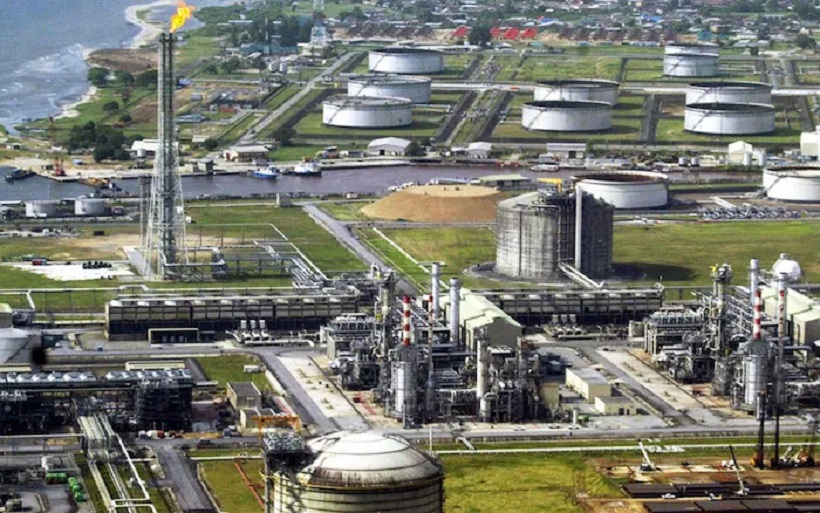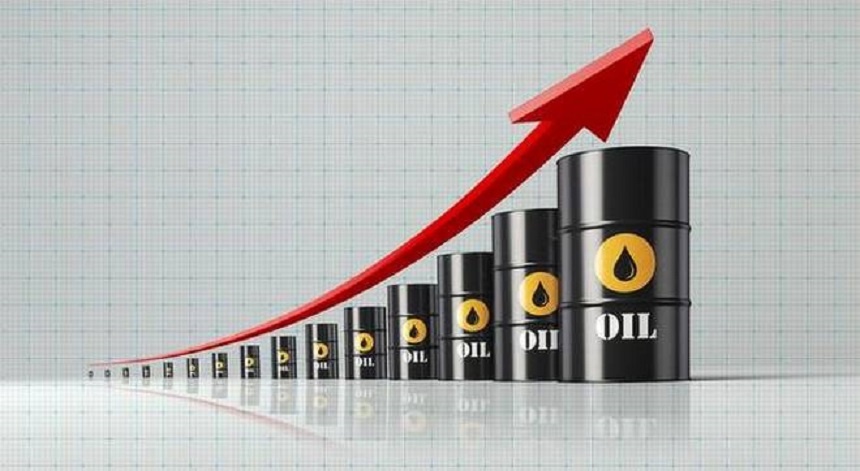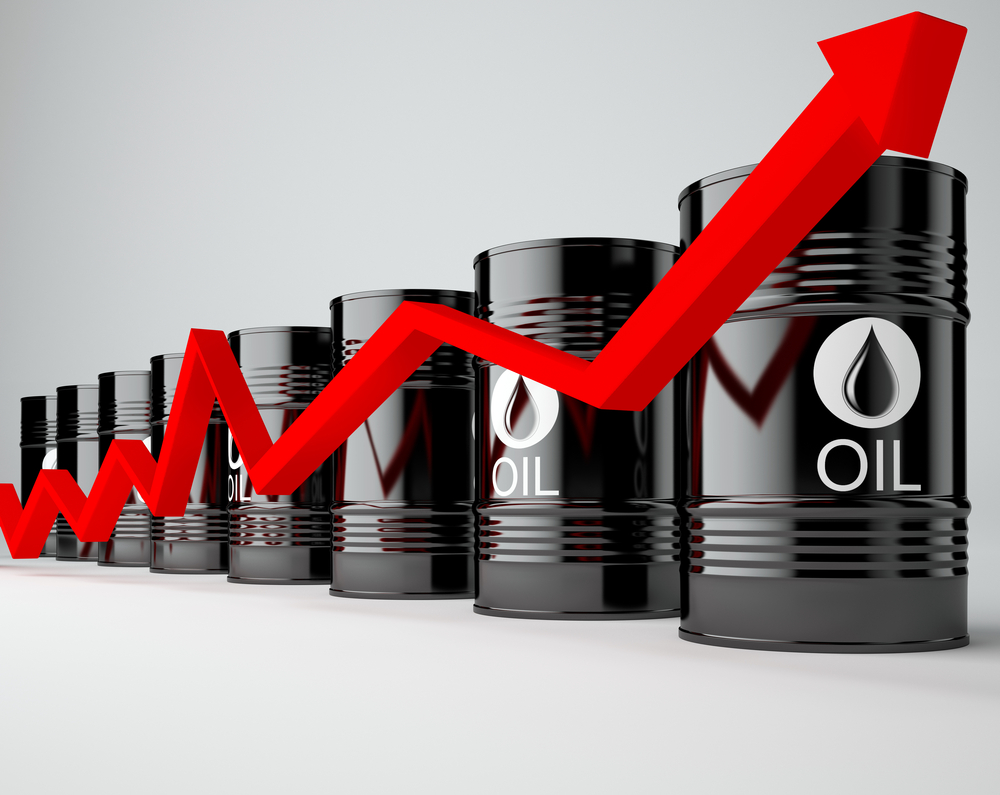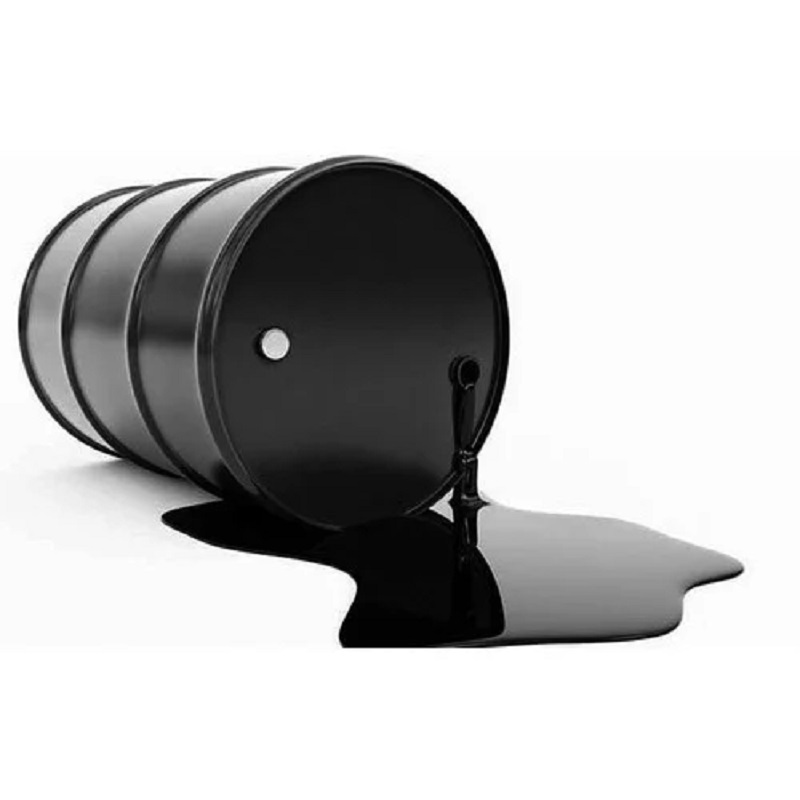Economy
Oil Slides as Chinese, US Data Offset Demand Pull

By Adedapo Adesanya
Oil on Tuesday as weaker-than-expected economic data in China and the United States offset a forecast of higher global demand from the International Energy Agency (IEA).
Brent crude futures lost 32 cents to $74.91 a barrel, while the US West Texas Intermediate (WTI) crude depreciated by 25 cents to $70.86 per barrel.
Chinese data showed that industrial output and retail sales growth undershot forecasts in April, suggesting the world’s second-largest economy lost momentum at the start of the second quarter.
Industrial output grew 5.6 per cent in April from a year earlier, accelerating from the 3.9 per cent pace seen in March, data released by the National Bureau of Statistics (NBS) showed. It was well below expectations for around a 10.9 per cent increase.
On the other hand, retail sales, a gauge of consumption, jumped 18.4 per cent, up sharply from a 10.6 per cent increase in March for their fastest increase since March 2021. Analysts had expected a 21 per cent growth.
However, an 18.9 per cent year-on-year rise in China’s oil refinery throughput in April to the second-highest level on record helped steady oil prices.
US data showed that retail sales increased less than expected in April, pointing to consumers feeling the pinch from rising prices and interest rates.
Meanwhile, the IEA raised its forecast for global oil demand this year by 200,000 barrels per day to a record 102 million barrels per day.
It also said China’s recovery after the lifting of COVID-19 curbs had surpassed expectations, with demand reaching a record 16 million barrels per day in March.
The world’s top oil importer is set to account for nearly 60 per cent of global demand growth in 2023, offsetting, along with India and the Middle East, sluggish demand in developed countries.
The US and Brazil are projected to lead modest growth in oil supply of 1.2 million barrels per day for the year as the Organisation of the Petroleum Exporting Countries and its allies, OPEC+ cuts agreed in April mean volumes from the producer group will fall 850,000 barrels per day from then through December, the IEA said.
Support came as the US Department of Energy on Monday said it would buy 3 million barrels of crude oil for delivery in August in a move to begin refilling the Strategic Petroleum Reserve (SPR).
Additionally, widespread fires in the Canadian province of Alberta have shuttered at least 319,000 barrels of oil equivalent per day, representing 3.7 per cent of Canada’s production.
Global crude supplies could also tighten in the second half of the year as OPEC+ implements additional output cuts.
Economy
NGX Crossing N100trn Reflects Renewed Investor Confidence—Popoola, Chiemeka

By Aduragbemi Omiyale
The chief executive of the Nigerian Exchange (NGX) Group Plc, Mr Temi Popoola, and his counterpart at the NGX Limited, Mr Jude Chiemeka, have expressed delight over the value of the bourse breaking the N100 trillion ceiling on Monday.
Yesterday, the domestic stock exchange gained 1.74 per cent, with the market capitalisation rising by N1.869 trillion to N101.807 trillion ($71.15 billion) from N99.938 trillion ($69.61 billion) and the All-Share Index (ASI) growing by 2,725.86 points to 159,218.22 points from last Friday’s 156,492.36 points.
The growth was buoyed by renewed investor demand and broad-based gains across listed stocks, resulting in a year-to-date returns of 2.32 per cent.
It was observed that the rally was driven by strong buying interest in stocks such as Cadbury Nigeria, Fidson Healthcare, and Champion Breweries, reflecting the traditional “January Effect” that often characterises early-year market activity.
Investor sentiment strengthened markedly, with market breadth improving to 9.13x as 73 equities recorded gains against eight decliners, signalling widespread participation in the rally.
“The equities market capitalisation crossing the N100 trillion mark is a defining milestone for Nigeria’s capital market and a clear signal of renewed investor confidence as the year begins.
“It reflects the market’s growing depth, resilience, and ability to respond positively to improving macroeconomic conditions and structural reforms,” Mr Popoola stated, adding that sustained collaboration between market stakeholders and regulators has played a key role in strengthening market credibility.
“Over the past two years, closer alignment between market operators, policymakers, and the Securities and Exchange Commission (SEC) has enhanced transparency, liquidity, and investor protection, reinforcing the Exchange’s role in mobilising long-term capital for economic growth,” he said.
On his part, Mr Chiemeka said, “The breadth of the market tells a positive story. We are seeing strong participation across banking, industrial, and consumer stocks, alongside rising trading volumes, which suggest growing investor confidence and a more active market at the start of the year.”
Economy
2026: NASD Exchange Eyes Inclusive Economic Growth, National Transformation

By Adedapo Adesanya
The Managing Director of the NASD Over-the-Counter (OTC) Securities Exchange, Mr Eguarekhide Longe, has said the bourse in 2026 would play its role in expanding the economic space and anchoring enduring socio-political transformation and inclusive growth in the country.
Speaking as part of his new year message, the NASD helmsman noted that the steady gains recorded in the nation’s macro-economy will translate to further gains in 2026.
“In this regard, we are optimistic about the further structural reforms and gains that will attend the implementation of the Nation’s new tax law.
“We know that there are development gaps to be covered in improving hard and soft infrastructure, as well as supporting genuine entrepreneurs across the length and breadth of the country, providing justification for scaling up projects and businesses via the instrumentality of structured capital market platforms,” he said.
He also said the flagship OTC market performed moderately with new admissions and a consolidation of the staple performers in the trading year 2025.
“2025 has turned out, in many respects, to be a year of reasonably positive performance, financially, but more a year of tangible results from the diversification of the activities on NASD,” Mr Longe said.
Business Post analysis of the bourse’s 2025 Trading Summary showed that the exchange recorded a strong expansion in market capitalisation in 2025, even as overall trading activity by deal count declined compared with 2024.
Market capitalisation on the exchange more than doubled to N2.12 trillion in 2025, representing a 106 per cent increase from N1.03 trillion in 2024. The number of admitted securities also rose marginally to 47, up from 45 in the prior year, reflecting a 4 per cent growth.
The NASD Securities Index (NSI) rose by 18 per cent to 3,543.74 points, compared with 3,002.68 points in 2024. Similarly, the NASD Pension Index advanced by 21 per cent to 1,032.88 points, up from 954.33 points.
Trading volumes surged significantly during the year. Total volume traded climbed to 14.03 billion units, marking a 377 per cent increase from 2.98 billion units in 2024. However, this sharp rise in volume contrasted with a decline in transaction value, which fell by 43 per cent to N59.29 billion, down from N103.96 billion in 2024.
The total number of deals executed on the platform dropped to 6,456, representing a 26 per cent decline from 8,724 deals recorded the previous year, indicating fewer but larger or more strategic transactions.
The exchange also recorded notable listings in 2025, with Infrastructure Credit Guarantee Company PLC (InfraCredit), Paintcom Investment Nigeria PLC (Paintcom), and MRS PLC admitted to trading. In addition, the listing of the Access Bank PLC Rights Issue contributed to market growth. Combined, new listings on the NASD in 2025 were valued at approximately N1.121 trillion.
Commercial Paper admissions unto the NASD platform exceeded N34.32 billion in the trading year and maiden offer on the NASD Digital Securities platform of a tokenised Commercial Paper stood at N5 billion.
Economy
NASD OTC Bourse Soars 0.60%

By Adedapo Adesanya
The trading compass at the NASD Over-the-Counter (OTC) Securities Exchange pointed north on Monday, January 5 after the market closed higher by 0.60 per cent.
The NASD Unlisted Security Index (NSI) added 21.49 points to close at 3,575.33 points compared to the previous session’s 3,553.84 points just as the market capitalisation inflated by N12.86 billion to finish at N2.139 trillion, in contrast to last Friday’s value of N2.126 trillion.
The growth recorded by the NASD OTC bourse yesterday was influenced by three securities led by FrieslandCampina Wamco Nigeria Plc, which gained N4.70 to close at N51.70 per share compared with the previous N47.00 per share.
Further, Geo-Fluids Plc appreciated by 43 Kobo to settle at N6.94 per unit versus N6.51 per unit, and Central Securities Clearing System (CSCS) Plc appreciated by 37 Kobo to N36.00 per share from N35.63 per share.
Data from the alternative stock exchange showed a drop in investor appetite as the volume of trades declined by 94.7 per cent to 193,973 units from 3.6 million units, while the value of transactions decreased by 68.2 per cent to N4.5 million from N14.1 billion, with the number of deals sliding by 34.8 per cent to 15 deals compared to 23 deals.
At the close of business, CSCS Plc was the most traded stock by value on a year-to-date basis with 341,080 units sold for N12.2 million, followed by Geo-Fluids Plc with 535,970 units valued at N3.5 million, and Industrial and General Insurance (IGI) Plc with 2.9 million units exchanged for N1.9 million.
However, IGI Plc was the most active stock by volume on a year-to-date basis with 2.9 million units traded for N1.9 million. trailed by Geo-Fluids Plc with 535,970 units worth N3.5 million, and CSCS Plc with 341,080 units valued at N12.2 million.
-

 Feature/OPED6 years ago
Feature/OPED6 years agoDavos was Different this year
-
Travel/Tourism9 years ago
Lagos Seals Western Lodge Hotel In Ikorodu
-

 Showbiz3 years ago
Showbiz3 years agoEstranged Lover Releases Videos of Empress Njamah Bathing
-

 Banking8 years ago
Banking8 years agoSort Codes of GTBank Branches in Nigeria
-

 Economy3 years ago
Economy3 years agoSubsidy Removal: CNG at N130 Per Litre Cheaper Than Petrol—IPMAN
-

 Banking3 years ago
Banking3 years agoFirst Bank Announces Planned Downtime
-

 Banking3 years ago
Banking3 years agoSort Codes of UBA Branches in Nigeria
-

 Sports3 years ago
Sports3 years agoHighest Paid Nigerian Footballer – How Much Do Nigerian Footballers Earn



















